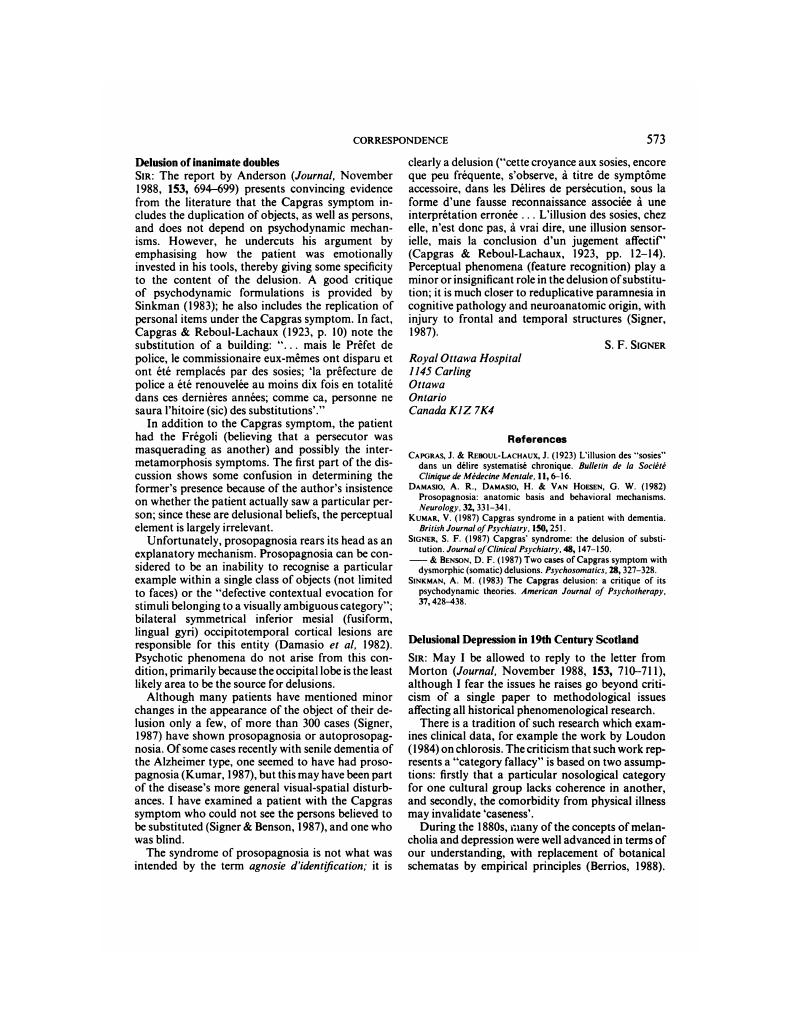Crossref Citations
This article has been cited by the following publications. This list is generated based on data provided by Crossref.
Frazer, Sheila J.
and
Roberts, Jeremy M.
1994.
Three Cases of Capgras' Syndrome.
British Journal of Psychiatry,
Vol. 164,
Issue. 4,
p.
557.
Edelstyn, N. M. J.
and
Oyebode, F.
1999.
A review of the phenomenology and cognitive neuropsychological origins of the Capgras syndrome.
International Journal of Geriatric Psychiatry,
Vol. 14,
Issue. 1,
p.
48.
Huang, Tiao‐Lai
Liu, Chia‐Yih
and
Yang, Yong‐Yi
1999.
Capgras syndrome: Analysis of nine cases.
Psychiatry and Clinical Neurosciences,
Vol. 53,
Issue. 4,
p.
455.






eLetters
No eLetters have been published for this article.